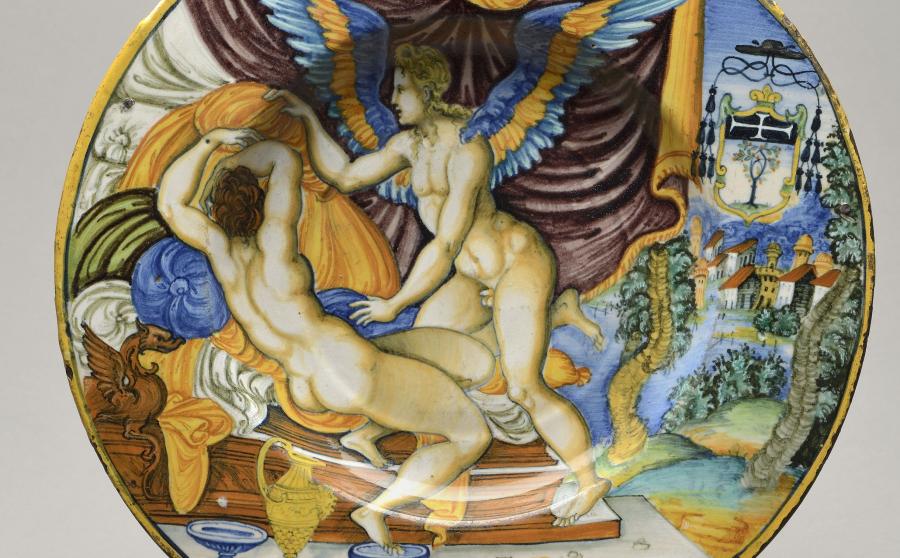Wide-rimmed bowl, Cupid and Psyche, from an engraving by Gian Giacomo Caraglio
Information sur l’artiste
Urbino, Italy,

Assiette à bords plats : Psyché et lAmour, 1542.
Image © Lyon MBA - Photo Alain Basset
Around the 1530s, the town of Urbino, in the Marche region of Italy, specialised in the production of narrative 'maiolica' earthenware. Each object presents a miniature painting, often inspired by a scene from an engraving. Here, a winged individual (Eros) discovers a reclining figure (Psyche). Behind them, the theatrical nature of the scene is emphasised by a voluminous drapery. In the background on the right-hand side, set above an urban landscape, is the coat of arms of the commissioner: an unidentified member of the Della Rovere family, at that time head of the Duchy of Urbino. The date, 1542, is painted on the bottom of the bowl, accompanied by the title: Cupido. et. Pisiche (Cupid and Psyche) and the inscription 'Urbino'. Despite these clues, the creator of this piece remains unidentified. Taking inspiration from an engraving by a Veronese artist Gian Giacomo Caraglio (circa 1500-1570), based on Ovid's work 'the Love of the Gods' and 'the Story of Psyche' by Apuleius, the artist takes certain liberties with the composition of this image. The landscape in the background and the generous use of manganese violet reveal his personal touch. Another notable feature is the manneristic style of the figures depicted (sensual poses, dramatic expressions, sexual ambiguity, etc.). Four other pieces from the same dinner service have been found to date and are held in various collections (Victoria and Albert Museum and British Museum, London, Herzog Anton Ulrich-Museum, Brunswick, and a private collection).
Urbino, Italy
1542
Tin-glazed earthenware with ‘high-fire’ decoration
Dia. 27; D. 2.8 cm
Bequeathed by Lambert in 1850
Inv. L 667





